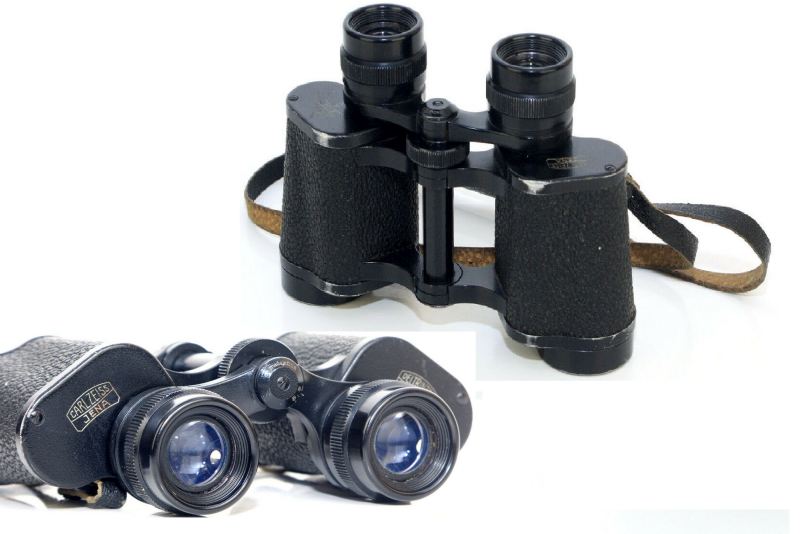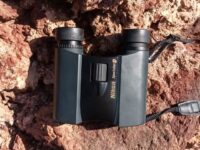This post contains affiliate links. If you follow a link I may earn a small commission at no extra cost for you.
Buying binoculars should be a well-considered decision so that the new pair of binoculars does not become a disappointment. There are many types of binoculars available in different sizes, for different areas of application with different properties and optical performance. The prices are also very different.
If you want to buy binoculars, you have to ask yourself: What Type of Binoculars is the right one for me? To answer this question you need to know a bit about the different types of binoculars.
What Type Of Binoculars Should I Buy
Binoculars come in many types for all sorts of purposes. From the opera to birding, from hiking to seafaring, and from daytime observations to night use. Each type of binoculars is suitable for a specific purpose, but for which one? Let’s have a look at the pros and cons of the various kinds of binoculars:
Travel and Hiking Binoculars
When traveling and hiking, compact dimensions and low weight are critical considerations for selecting hiking binoculars. A wide field of view is beneficial for scanning the landscape and scenery, and strong magnification is desirable if you want to see far away objects in detail
And since you are hiking or traveling, you might get into misty weather or find yourself in shady and dark terrain so you would appreciate enough light-gathering power to enjoy sufficiently bright images.
All these criteria above are best met by 8×30 or 8×32 binoculars. Instruments with those specs have a wide field of view of good 400yard at 1000yards distance, an exit pupil of around 4 mm which provides enough brightness so you can still use the binoculars in dense woods and on cloudy days, and they are light and compact weighing no more than about 20 ounces.
Hiking binoculars should be as robust as possible to cope with hard bumps or being dropped. Nitrogen filling is desirable so they are really waterproof. The instrument must not fail in cold weather either, good handling and easy operation are a matter of course.
Advantage: Lightweight and compact, good optical performance, wide field of view
Disadvantage: Weak in low light conditions
No products found.
Compact binoculars
These binoculars are highly popular, they are available in all qualities from supercheap china glasses to high-end models from the best binoculars makers. They are so small that many people have one “just in case stashed away somewhere” so they can get it out if there is a need to quickly observe some distant objects.
Compact binoculars are extremely lightweight often below 10 ounces /300 grams. Such a lightweight construction naturally comes at the expense of observation comfort. The lens diameters of compact models are usually between 20 and 25 mm. Small entrance pupils lead to small exit pupils, which means that compact models are only suitable for daylight observations.
Magnification is usually 8 to 10 times. The small lens diameter typical for this class of binoculars means that the exit pupil is small too, usually between two and three millimeters, depending on which model you choose. So these models are really only suitable for daytime observation and you will quickly see that you will reach your limits if you try to observe at dusk. Some expensive models with high-quality coatings still get something out of the additional transmission and you can see the difference between cheap and premium manufacturers.
The short, compact design of these types of binoculars requires shorter focal lengths of the lenses. A short eyepiece focal length inevitably leads to a shorter eye relief which limits the suitability of compact lenses for glasses wearers
Advantage: Very light, small compact design, fit in any pocket
Disadvantage: Only suitable for daytime observation in good lighting conditions. Not very suitable for wearers of eyeglasses due to short eye relief
No products found.
Allround Binoculars
Binoculars with objective lens diameters of 42 mm are the most versatile. In combination with a magnification of 8x or 10 times do they cover a wide range of application areas and are the favorites of birdwatchers, hunters, rangers, and other professionals.
The large objective lenses allow a lot of light to enter and ensure a high twilight factor and with a magnification of 8 or 10 times, the exit pupils of around 4 to 5 mm are large enough to use the instruments even in low light conditions and in the twilight.
The larger design allows longer lens and eyepiece focal lengths, which reduces optical distortion, field curvature, and edge blur and consequently results in better optical performance. Size matter in optics! No wonder space telescopes keep on getting bigger.
Longer eyepiece focal length also goes hand in hand with longer eye relief, so these types of binoculars are generally very suitable for glasses wearers.
Advantage: Good for low light observation, long eye relief makes them suitable for eyeglass wearers, high optical performance.
Disadvantage: The 10×42 has a smaller field of view than the 8×42 models, and the 10×42 is less suitable for low light use than an 8×42 model because of the smaller exit pupil.
No products found.
What Type Of Binoculars Are Best For Bird Watching
Good binoculars for bird watching have to meet high demands. Most bird species are particularly active at dawn and dusk. So in addition to the ideal magnification, bright images, contrast, and high color fidelity are particularly important for animal and bird watching.
The Allround Binoculars described above with 42 mm objective lenses can capture a lot of light so they are a step in the right direction regarding Twilight performance. However, the lens diameter is only one factor in relation to the actual brightness of the image displayed. The kind and the grade of the optical glass used for the lenses and prisms are much more important than just large lenses.
When buying, pay attention to special extra-low dispersion glass with fully multi-layer coatings. This along with phase-corrected high-quality BAK-4 prisms in roof prism binoculars enhance light transmission, resolution, contrast, and color fidelity.
Advantage: Quality binoculars provide crisp, contrast-rich images of high color fidelity, precisely recognize the plumage color and the pattern of a bird, simplifies the determination of the species.
Disadvantage: Cheap binoculars will not do, the purchase price is rather high.
No products found.
Binoculars for Hunters
Hunters are demanding when it comes to the quality of binoculars. Hunting is often done in adverse conditions, at low temperatures, and the weather can be very unfavorable. Binoculars for hunters must be built to be particularly robust so that they can withstand snow, rain, and fog. Reliable and high-quality binoculars that work under all these environmental conditions are what hunters need.
The type of binoculars also depends on the type of hunting. If you’re still hunting and stalking game through the woods, a model with around 8x magnification and a 32mm or 42mm lens is recommended. It is bright enough and a larger field of view is useful in an environment where there are often many hiding places. When long-range hunting or sitting on a tree stand, a higher magnification of 10 or even 12 times may be advisable. A tripod becomes essential for binoculars with high magnification.
And it is different again if you hunt at dusk or at night. Then you would need binoculars with a large aperture for their higher light-gathering power. The favorite low-light binoculars amongst hunters are 8×56 or 10×56 models.
As the different kinds of hunting suggest, every hunter would actually need several binoculars. Personal preferences are very different, but 8×42 or 10×42 binoculars are a good compromise to start with. However, skilled hunters often have several binoculars that they have acquired over the years for different hunting styles
An additional feature that is worth considering is a rangefinder feature.
Advantage: High optical performance, good transmission, wide field of view
Disadvantage: Might need 2 or 3 binoculars, as there is no one model for the various types of hunting
No products found.
Low Light Binoculars
Binoculars with objective lens diameters of 50mm or even larger are often referred to as low light or night binoculars. They are great at dusk and at night for wildlife viewing or hunting. Such wide lenses allow large amounts of light to enter the binoculars. And theoretically, the more light goes in, the better the twilight performance and the better the viewing in low light conditions.
The magnification power 7x, 8x, or 10x of these binoculars seems quite low for such a large and bulky instrument. But how well binoculars perform when there is only little light, depends also on the magnification. The larger the magnification, the smaller the exit pupil, thus the weaker the twilight performance. A large collecting lens and low magnification result in a large exit pupil.
This is particularly important so that as much light as possible reaches the retina. As the eye adapts to the night, the pupil widens depending on the age of the observer to 6mm, in young people 7 mm or just over. The larger the exit pupil of the binoculars, the more light arrives at the eye and the brighter the images will appear.
An exit pupil of around 6mm is desirable in these types of binoculars, to allow as much light as possible to reach the human eye. For the best optical performance of a night glass, transmission is a critical factor. In the best binoculars, special glass with high transmission, and high-quality multilayer coatings are used to cut out reflection and keep light losses low. So much optical high tech has its price.
Advantage: Best for night and twilight observation. Very contrast-rich and bright images
Disadvantage: Quite expensive.
No products found.
So, What Type Of Binoculars Should I Buy
There are many good reasons for purchasing high-quality binoculars. A pair of binoculars is an optical precession instrument that will be with you for many years. To really have fun with it, you have to buy the right type depending on what you are going to use it for. As a seafarer, you will hardly be able to cope with compact binoculars.
The first criteria to consider are:
Magnification, objective diameter, weight, the field of view, the exit pupil, and the eye relief.
These are a few selection criteria that allow you to narrow down the options. The actual quality depends largely on technological factors such as:
Type and quality of the optical glass, whether surfaces are fully multi-coated, type of prisms – Porro or roof (are they phase correct), precision workmanship and harmonizing of the optical elements, good processing and smooth operation of the mechanical components i.e. focusing, diopter adjustment, waterproof housing, nitrogen purged.
As you can see, there are quite a few things to consider. Perhaps this is also one of the reasons why many people that use binoculars professionally own a selection of binoculars.

